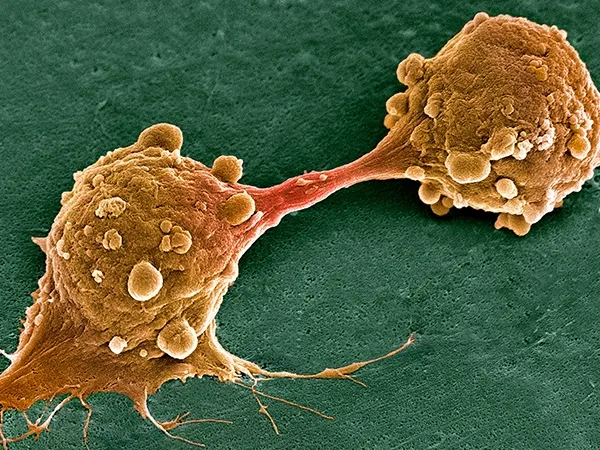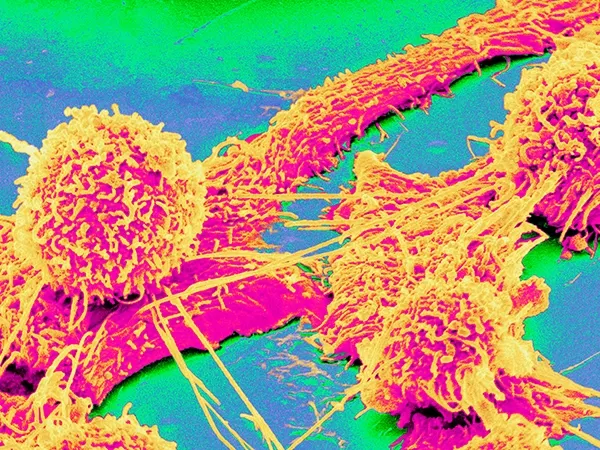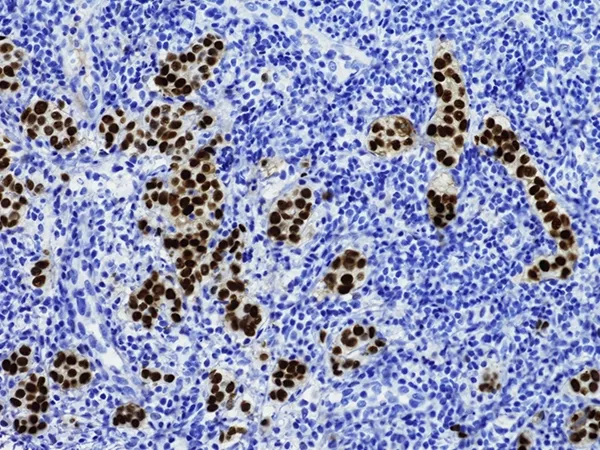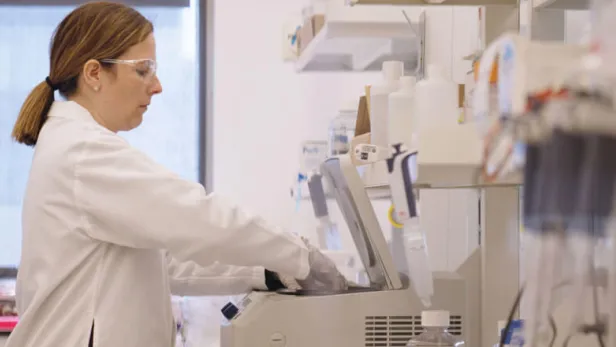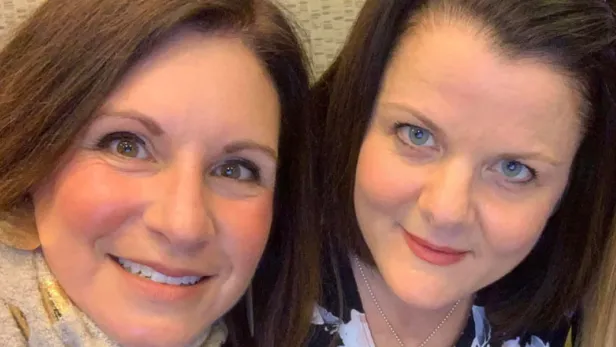Cancer impacts all of our lives
Every year in the United States, about 2 million people receive a new cancer diagnosis.1 Globally, it’s 20 million.2
Cancer is one of the greatest healthcare challenges of our lifetime. Pfizer is working to ensure it won’t be for the next generation. Nothing is more urgent, or more personal, than our goal to outpace, outsmart, and outmaneuver cancer at every turn.
Our Focus
Our therapeutic areas of focus
At Pfizer, we’ve taken major steps over the past decade to address different types of cancer and improve the standards of care.
We are focusing on the cancer types where we have already established presence and where we can further develop our leadership: breast cancer, across hormonal subtypes; genitourinary cancer, including prostate and bladder cancer; hematologic malignancies, including multiple myeloma and lymphomas, such as Hodgkin’s disease; and thoracic cancers, which includes lung cancer.
Within our tumor areas, we are seeking to deepen our ability to address unmet medical needs across the care continuum – by reaching new and larger patient populations, extending survival and improving quality of life.
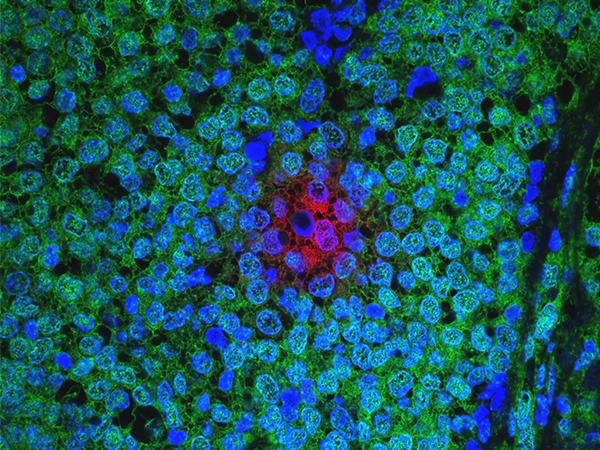
Breast
Breast cancer can form in different parts of one or both breasts.4 After skin cancers, it’s the most frequently diagnosed cancer for women in the U.S.5

Genitourinary
Genitourinary cancers include prostate and bladder cancer, which are some of the most common cancers in the U.S.6

Hematologic Malignancies
Hematologic malignancies, like lymphoma and multiple myeloma, impact blood cells.7

Thoracic
Thoracic cancers develop in the chest.8 Lung and bronchus cancer are the leading cause of cancer-related deaths in the U.S.9
A robust pipeline to breakthroughs
Pfizer has a deep and diverse pipeline within our focused therapeutic areas. Our goal is to double the number of patients treated with our cancer medicines by 2030.
The below pipeline tracks the progress of our medicines in development, from small-scale Phase 1 studies to large-scale Phase 3 trials in progress.13
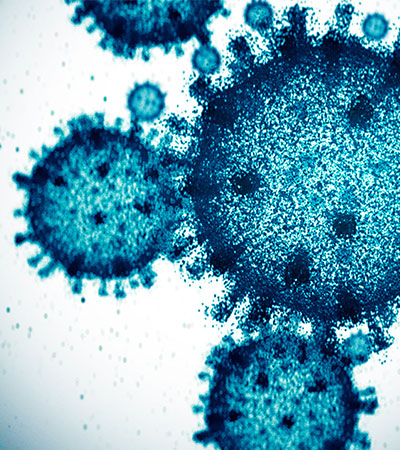
Our scientific approach
Cancer is a group of diseases, each with unique characteristics. Where they originate, the rate they grow and spread, and how they react to medicines and treatments vary.7
Our methods for fighting cancer must be as adaptive as cancer itself.
We are focused on three main modalities where we have significant depth, world-class capabilities, and expertise: small molecules, antibody drug conjugates (ADC's), and non-ADC biologics, leading with bispecific antibodies. We’re attacking tumors from multiple angles, and, enabled by our deep technical expertise, have the unique ability to combine and adapt modalities to potentially improve outcomes for patients.
Our modality focus
enabled by
deep technical expertise
We have a unique ability to combine and adapt modalities to improve outcomes
Small Molecules
Small molecules are small enough to get inside cancer cells and disrupt their growth and progression.10
Antibody-Drug Conjugates
Antibody-drug conjugates (ADCs) target tumors while limiting damage to healthy cells.11
Bispecific Antibodies
Bispecific antibodies help the body’s immune system attack cancer cells.12
Our capabilities & expertise
Our legacy and future, driven by cutting-edge science
For more than two decades, we’ve been at the forefront of innovation in cancer diagnosis and treatment. We created our portfolio of cancer medications with industry-leading technological and developmental expertise, driving breakthrough therapies that have now become the standard of care.
We continue to advance our understanding of how to treat cancer by investing in emerging therapies, such as antibody-drug conjugates (ADCs). With approximately 40% of all R&D investment at Pfizer directed towards Oncology, we have a robust and diverse pipeline, with more than 50 programs in development and more than 25 new molecular entities. Currently, Pfizer offers five leading cancer medications—and we aim to have at least eight more key medicines in our portfolio by 2030.
World-class R&D capabilities
The heart of our oncology program lies in two major research and development (R&D) hubs on the U.S. West Coast, where groundbreaking discoveries in cancer therapies come to life. Our recently expanded U.S.-based manufacturing capabilities allow us to produce promising new therapies like antibody-drug conjugates (ADCs). Our ten additional oncology medicine manufacturing sites, spanning three continents and over 100 countries, help us deliver cutting-edge cancer treatments to patients worldwide.
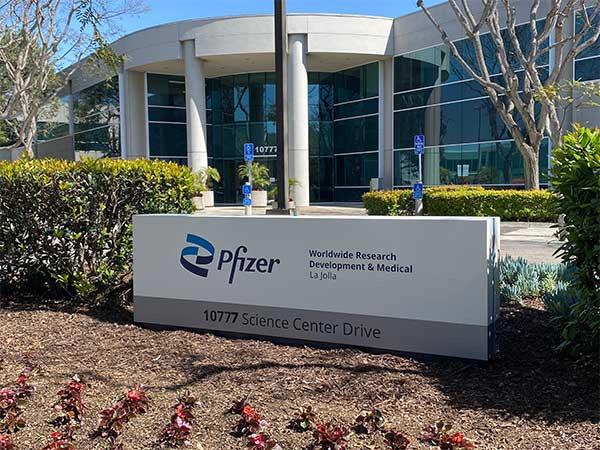
La Jolla, CA
With 500,000+ square feet of state-of-the-art facilities, this is where our scientists discover and develop cutting-edge cancer therapies utilizing advanced laboratories and equipment.

Bothell, WA
This expansive 500,000+ square foot facility is dedicated to revolutionizing cancer treatment. Our researchers are pioneering innovative cancer therapies utilizing advanced laboratories and equipment.
Our commitment to the oncology community
We know breakthrough medicines can’t save lives if they can’t get to the people who need them. We work with the entire oncology community to reach patients faster – by addressing barriers to access and tackling inequities in care, meeting patients and providers where they are, and moving with urgency to anticipate and respond to the needs of the millions of patients we seek to serve.

An American Cancer Society initiative sponsored by Pfizer that aims to improve health outcomes in underserved communities across the United States by enhancing awareness of and access to cancer screenings, clinical trial opportunities, and patient support and comprehensive navigation.
For more information, visit https://www.cancer.org/ChangeTheOdds

This program supports all people in their cancer journey. It helps them access helpful resources, build coping skills, connect with loved ones, and find tools to live life beyond their diagnosis.
For more information, visit https://www.thisislivingwithcancer.com/

Accord for a Healthier World aims to help close the health equality gap and is part of Pfizer’s comprehensive approach to expand access to medicines and quality healthcare for all people.
For more information, visit https://www.accordforahealthierworld.com/en/

A network of advocacy and professional organizations convened by Pfizer to share information, identify concrete actions and collectively move forward on solutions to problems that inadvertently create barriers for cancer patients.
For more information, visit https://www.pfizer.com/science/oncology-cancer/patient-centricity-white-paper.
How you can help
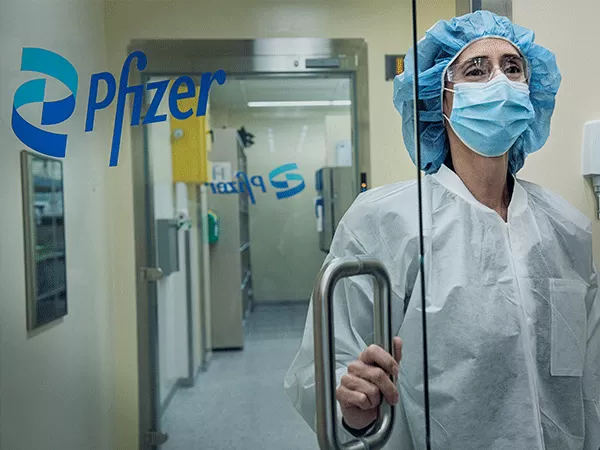
Careers that change lives
Join us in accelerating cancer breakthroughs. To tackle the biggest health challenge of our lifetime, we’ve developed a robust R&D engine focused on delivering next-generation oncology breakthroughs. Here, you’ll be on the ground floor of innovation, powering a new era of cancer care.
Explore Careers in Oncology DetailsClinical trials are crucial studies with volunteer participants that evaluate methods for preventing, detecting, and treating diseases.
They help experts determine whether a new approach is safe and effective, identify possible side effects, and compare it with standard treatments.13
Our oncology pipeline includes more than 50 programs in development within our deep and diverse pipeline spanning our core modalities and key tumor areas. When you participate in a clinical trial, you offer hope for your community, future generations, and yourself. We invite you to explore Pfizer's cancer clinical trials here.
Find a Pfizer Clinical Trial Details
Types of cancer

Bladder cancer is the 6th most common cancer in the U.S. In 2024, an estimated 80,000 new cases of bladder cancer will be diagnosed in the U.S. Men are four times more likely to be diagnosed with bladder cancer than women. Though the rates of both new bladder cancers and deaths from bladder cancer have been dropping in recent years, many people still face cancer progression and advanced bladder cancer is a common cause of cancer-related death.

Worldwide, breast cancer is the most common invasive cancer, with more than 2.2 million impacted annually. Metastatic breast cancer (mBC), the most advanced stage of breast cancer in which the cancer has spread beyond the breast to other parts of the body (i.e., organs, bones), remains an incurable disease. As a result of earlier screening, increased awareness, and better treatments, breast cancer deaths have continued to decrease in older women. From 2013 to 2018, the death rate went down by 1% per year.
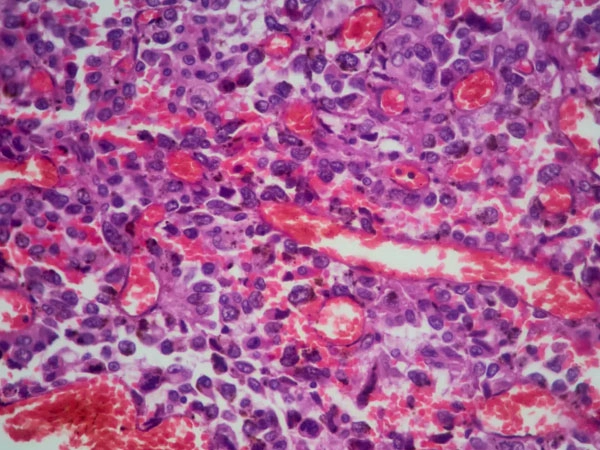
Cervical cancer begins in the cervix, which is found in the lower part of the uterus that connects to the vagina. In 2024, an estimated over 13,000 new cases of cervical cancer will be diagnosed in the U.S. Despite advances in vaccination and preventative screening practices, approximately 15% of patients present with metastatic disease at diagnosis. Among patients with initial diagnosis of early-stage disease, up to 61% will recur. Recurrent or metastatic cervical cancer is a devastating and mostly incurable disease with an urgent need for more treatment options. Patients who experience disease progression on or after first-line systemic therapy have limited effective therapy choices.

Worldwide, colorectal cancer is the third most common type of cancer in men, and the second most common in women, with approximately 1.8 million new diagnoses in 2018. In the U.S. alone, an estimated 147,950 people will be diagnosed with cancer of the colon or rectum in 2020, and approximately 53,000 are estimated to die of their disease each year.
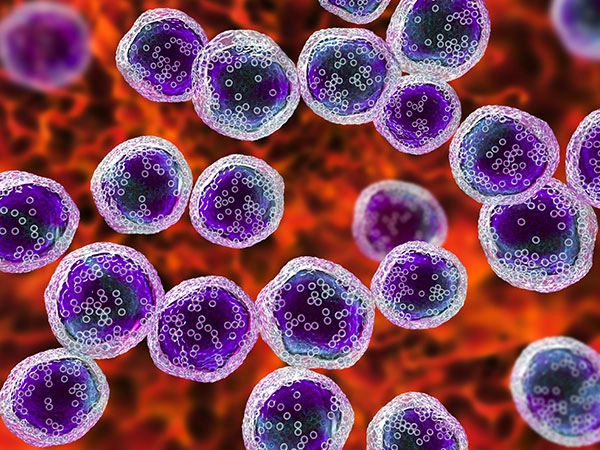
Head and neck cancers occur in the larynx, throat, lips, mouth, nose, and salivary glands. About 4% of all cancers in the U.S. are head and neck cancers. These cancers are more than twice as common among men than among women. In 2023, an estimated over 65,000 new cases of head and neck cancer were diagnosed in the U.S. There is a high need for additional effective treatment options for head and neck cancers.
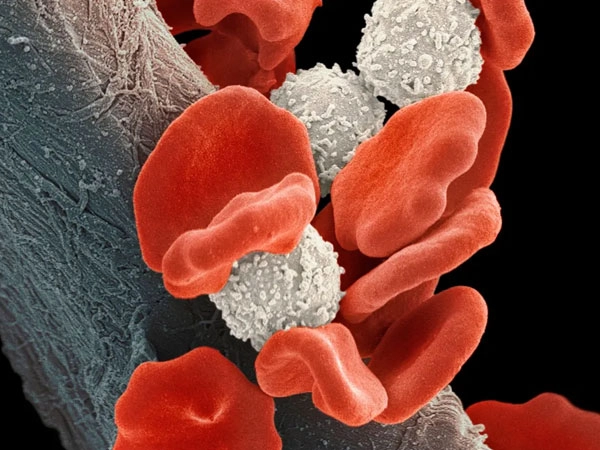
Blood cancers strike ruthlessly at any age. Some come fast and take lives within weeks or months. Others develop in the bones and blood over time, requiring intense and aggressive treatment interventions that are traumatic, emotionally overwhelming, and expensive. More than 1 million people worldwide were diagnosed with a blood cancer in 2020, representing almost 6% of all cancer diagnoses globally. In 2020, more than 700,000 people worldwide died from a form of blood cancer.

Lung cancer remains the leading cause of cancer-related death among men and women globally, and the global five-year survival rate at 17.8 percent is much lower than leading cancers. Lung cancer is notoriously difficult to treat due to the heterogeneous nature of the disease, variability in testing rates and the onset of drug resistance. These challenges necessitate an individualized approach to treatment, ensuring people with lung cancer receive the right drug at the right time.
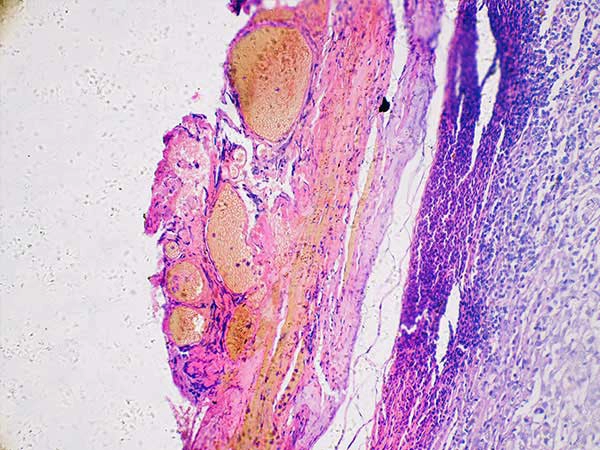
Though melanoma skin cancer is much less common (1%) than some other types of skin cancers, it causes the vast majority of skin cancer deaths. It is considered more dangerous because it’s much more likely to invade nearby tissue and spread to other parts of the body if not caught and treated early when it is most likely to be cured.
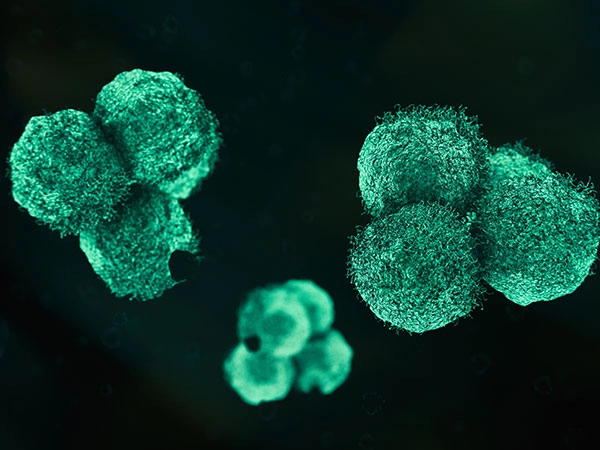
Prostate cancer is the most common cancer in men in the U.S., aside from non-melanoma skin cancer, and is a leading cause of death from cancer. About 1 in 8 men will be diagnosed with prostate cancer in their lifetimes. Black men are 70% more likely than White men to be diagnosed with prostate cancer. In 2024, an estimated 300,000 new cases of prostate cancer will be diagnosed in the U.S. Though the death rate had been improving, lately this trend has slowed. This change is likely from an increase in later-stage diagnoses that are more difficult to treat.
Oncology Resources
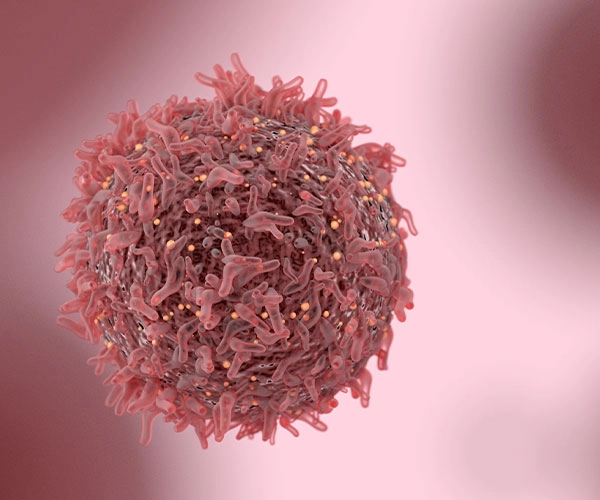
- References
- Cancer Facts & Figures 2025. American Cancer Society. Accessed March 17, 2025. https://www.cancer.org/content/dam/cancer-org/research/cancer-facts-and-statistics/annual-cancer-facts-and-figures/2025/2025-cancer-facts-and-figures-acs.pdf
- World. Global Cancer Observatory. Accessed March 17, 2025.https://gco.iarc.who.int/media/globocan/factsheets/populations/900-world-fact-sheet.pdf
- What Is Cancer? National Cancer Institute. Updated October 11, 2021. Accessed March 17, 2025. https://www.cancer.gov/about-cancer/understanding/what-is-cancer
- What Is Breast Cancer? American Cancer Society. Updated November 19, 2021. Accessed March 17, 2025. https://www.cancer.org/cancer/types/breast-cancer/about/what-is-breast-cancer.html
- Key Statistics for Breast Cancer. American Cancer Society. Updated January 22, 2025. Accessed March 17, 2025. https://www.cancer.org/cancer/types/breast-cancer/about/how-common-is-breast-cancer.html
- Common Cancer Types. National Cancer Institute. Updated May 10, 2024. Accessed March 17, 2025. https://www.cancer.gov/types/common-cancers
- What Is Cancer? American Cancer Society. Updated July 25, 2024. Accessed March 17, 2025. https://www.cancer.org/cancer/understanding-cancer/what-is-cancer.html
- Thoracic Cancer. UC Davis Health. Last reviewed July 07, 2023. Accessed March 17, 2025. https://health.ucdavis.edu/conditions/cancer/thoracic-cancer
- Cancer Stat Facts: Common Cancer Sites. National Cancer Institute. Accessed March 17, 2025. https://seer.cancer.gov/statfacts/html/common.html
- How Targeted Therapies Are Used to Treat Cancer. American Cancer Society. Updated January 29, 2021. Accessed March 17, 2025. https://www.cancer.org/cancer/managing-cancer/treatment-types/targeted-therapy/what-is.html
- Pettinato MC. Introduction to Antibody-Drug Conjugates. Antibodies (Basel). 2021;10(4):42. Published 2021 Oct 27. doi:10.3390/antib10040042
- Chennapragada SS, Ramadas P. Bispecific Antibody Toxicity. In: StatPearls. Treasure Island (FL): StatPearls Publishing; April 20, 2024.
- NIH Clinical Research Trials and You: The Basics. National Institutes of Health. Last reviewed October 3, 2022. Accessed March 17, 2025. https://www.nih.gov/health-information/nih-clinical-research-trials-you/basics


